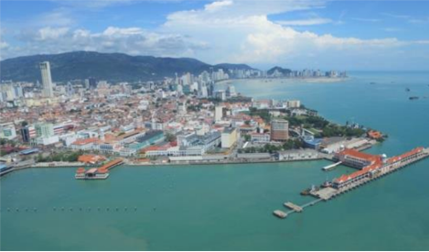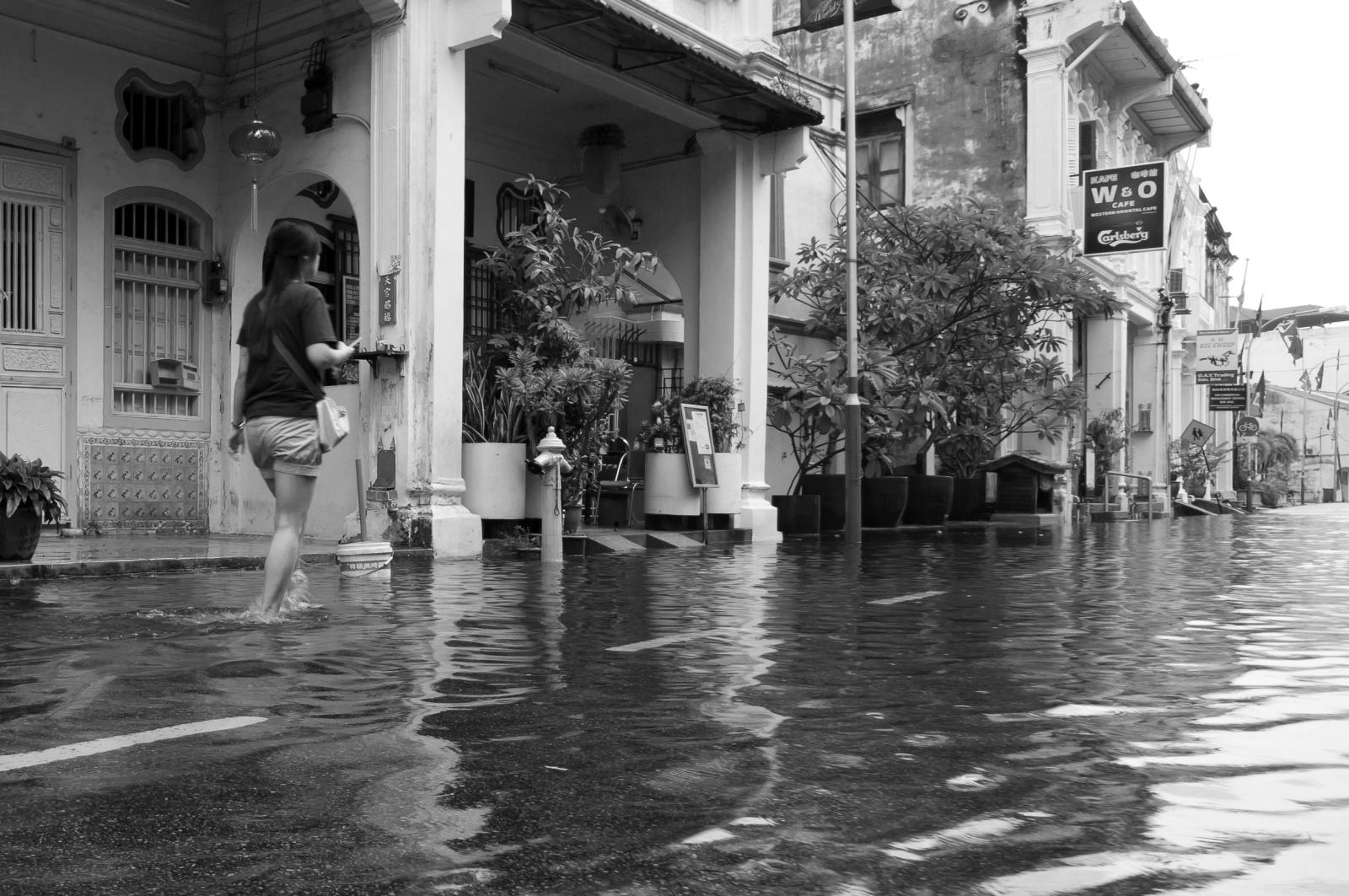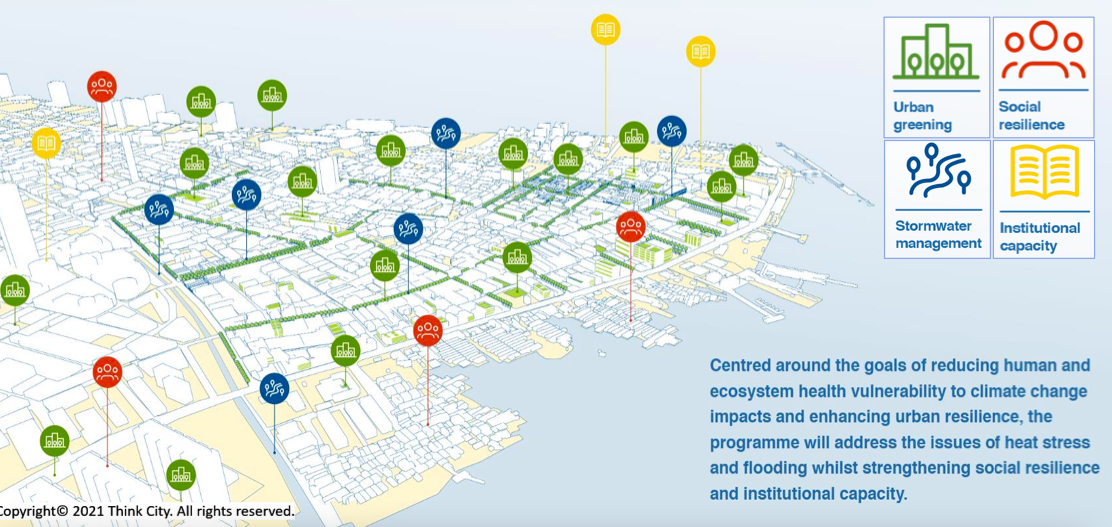Penang is a state located in north-western Peninsular Malaysia with an area of 1,049 km2. It comprises two local authorities, Penang Island and the mainland. The former is further divided into five administrative districts which are further divided into mukims (sub-districts). Two urban mukims located on the island – George Town and Bayan Lepas – are the focus of the proposed nature-based solutions (NBS) climate adaptation programme. The programme was launched in 2022 by UN-Habitat in collaboration with the Ministry of Environment and Water (KASA) of Malaysia, Penang Island City Council (Majlis Bandaraya Pulau Pinang - MBPP), Department of Irrigation and Drainage (Jabatan Pengairan Dan Saliran - JPS) and Think City (a wholly-owned subsidiary of Khazanah Nasional Berhad (the sovereign wealth fund of the Government of Malaysia)). (Ref 1) The implementation of the project responds to several challenges posed by climate change including heatwaves and flooding (Ref 4). The main goal of the programme is to enhance urban resilience and reduce human and ecosystem health vulnerability to climate change impacts and extreme weather events by implementing nature-based solutions (NBS) such as tree-lined streets, pocket parks, green parking spaces, green facades and rooftops, urban agriculture and blue-green corridors to reduce surface temperatures and stormwater runoff, as well as to increase social resilience and build institutional capacity (Ref 1, 3).
Overview
Nature-based solution
- Blue infrastructure
- Rivers/streams/canals/estuaries
- Community gardens and allotments
- Allotments
- Green areas for water management
- Swales and filter strips
- Grey infrastructure featuring greens
- Alley or street trees and other street vegetation
- Riverbank/Lakeside greens
- Green parking lots
- Nature in buildings (indoor)
- Green walls and ceilings
- Nature on buildings (external)
- Green roofs
- Green walls or facades
- Parks and urban forests
- Pocket parks/neighbourhood green spaces
Key challenges
- Climate action for adaptation, resilience and mitigation (SDG 13)
- Climate change adaptation
- Climate change mitigation
- Green space, habitats and biodiversity (SDG 15)
- Green space creation and/or management
- Water management (SDG 6)
- Flood protection
- Stormwater and rainfall management and storage
- Social justice, cohesion and equity (SDG 10)
- Social justice and equity
- Environmental education
- Sustainable consumption and production (SDG 12)
- Sustainable consumption
- Sustainable production
Focus
Project objectives
Implementation activities
Climate-focused activities
Climate change adaptation:
- Increase or improve urban vegetation cover to help reduce outdoor temperature
- Implement green walls or roofs to lower indoor temperature and provide insulation
- Implement sustainable urban drainage infrastructure (e.g. to make space for water)
- Increase the use of climate-resilient plant species (resistant to drought, fire, and pests)
Climate change mitigation:
- Increase green urban nature for carbon storage (wetlands, tree cover)
- Install vertical or horizontal artificial surfaces that help with carbon storage and cooling
- Improve carbon sequestration through selection of more adaptable species
- Raise public awareness of behaviours, lifestyle and cultural changes with mitigation potential
Main beneficiaries
- National-level government
- Local government/Municipality
- Public sector institution (e.g. school or hospital)
- Non-government organisation/Civil Society
- Researchers/University
- Citizens or community groups
- Marginalized groups: Socio-economically disadvantaged populations (e.g. low-income households, unemployed)
- Young people and children
Governance
Management set-up
- Co-governance with government and non-government actors
Type of initiating organisation
- National government
- Local government/municipality
- Multilateral organisation
Participatory approaches/ community involvement
- Dissemination of information and education
- Consultation (e.g. workshop, surveys, community meetings, town halls)
Details on the roles of the organisations involved in the project
Project implemented in response to ...
Financing
Total cost
Source(s) of funding
- Multilateral funds/international funding
Type of funding
- Direct funding (grants, subsidies, or self-financed projects by private entities)
Non-financial contribution
Impacts and Monitoring
Environmental impacts
- Climate change
- Lowered local temperature
- Enhanced carbon sequestration
- Water management and blue areas
- Increased protection against flooding
Economic impacts
- Reduce financial cost for urban management
Socio-cultural impacts
- Social justice and cohesion
- Increased involvement of locals in the management of green spaces
- Health and wellbeing
- Improved physical health
- Improved mental health
- Education
- Increased awareness of NBS and their benefits
Type of reported impacts
Presence of formal monitoring system
Presence of indicators used in reporting
Presence of monitoring/ evaluation reports
Availability of a web-based monitoring tool
References
2. Think City (2022), Climate Resilient Tree Database Set to Help Citymakers Place The Right Tree At The Right Place, available at Source link (accessed 27-1-2023)
3. Adaptation Fund (2022), Request for Project / Programme Funding from the Adaptation Fund, available at Source link (accessed 27-1-2023)
4. Investor (2022), About 100,000 trees to be planted in Penang to counter climate change, available at Source link (accessed 6-2-2023)
5. AcRESt, Atlas of Climate Resilient Tree Species, (no date), available at Source link (accessed 6-2-2023)
6. Adaptation Fund (2022), Inception Report, available at Source link (accessed 27-2-2023)



